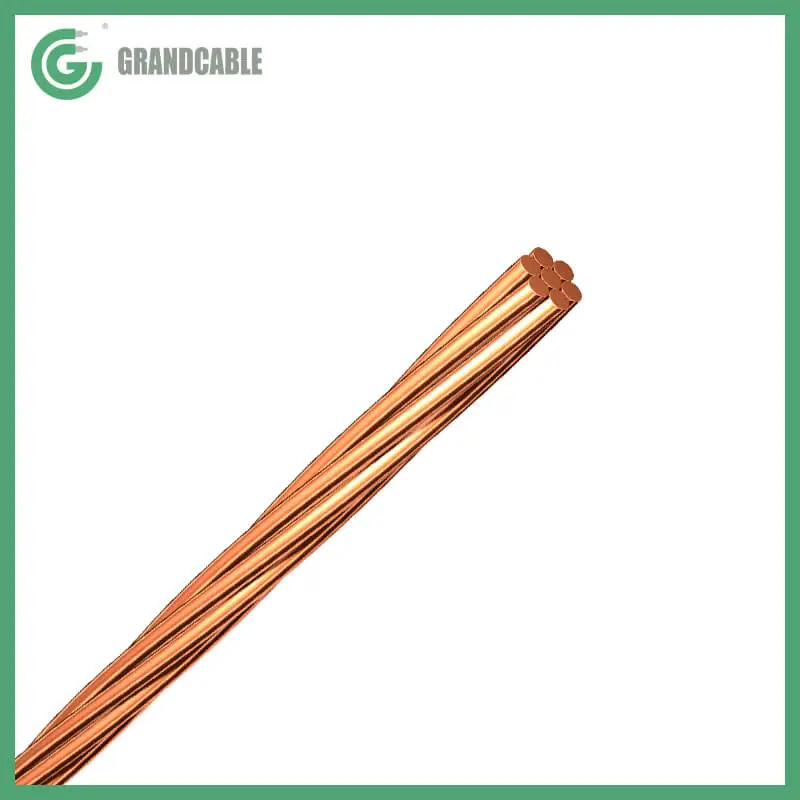Projects
GRAND CABLE
PROJECTS
Innovative Uses of Soft Drawn Bare Copper Wire in Modern Electronics
1. Introduction
Soft drawn bare copper wire has emerged as a cornerstone in the realm of modern electronics. With its incredible conductivity and versatility, it has become essential for various applications that demand reliability and efficiency. Unlike other materials, soft drawn bare copper wire is malleable, making it ideal for intricate electronic designs. This article delves into its innovative applications, providing insights into why it is a favored choice in the electronics industry.
2. Key Properties of Soft Drawn Bare Copper Wire
Understanding the unique properties of soft drawn bare copper wire is vital for appreciating its applications in electronics. Here are some key characteristics:

2.1 Superior Conductivity
Copper is known for its outstanding electrical conductivity, which ensures minimal resistance in electrical circuits. This property is indispensable for high-performance electronic devices.
2.2 Malleability and Ductility
The softness of the wire allows it to be easily shaped and manipulated. This is particularly beneficial when integrating wire into devices with complex geometries.
2.3 Corrosion Resistance
While bare copper is susceptible to oxidation, its treatment can enhance its resistance to corrosion, ensuring longevity and reliability in various applications.
2.4 Thermal Conductivity
Copper’s excellent thermal conductivity allows it to efficiently dissipate heat, making it ideal for applications in heat-sensitive electronic components.
3. Applications in Modern Electronics
Soft drawn bare copper wire finds its way into numerous electronic applications, enhancing functionality and performance across various sectors.
3.1 Electrical Connectivity Solutions
In modern electronics, reliable electrical connectivity is crucial. Soft drawn bare copper wire is widely used in wiring harnesses, circuit boards, and connectors. Its flexibility and conductivity ensure that connections are stable and efficient, reducing the risk of failures in electronic devices.
3.2 Enhancements in Audio Equipment
The audio industry has seen significant advancements with the use of soft drawn bare copper wire. High-fidelity audio equipment benefits from the wire’s superior conductivity, which delivers clear sound without distortion. Audiophiles often prefer cables made from this type of wire for its ability to enhance audio quality significantly.
3.3 Integration in Renewable Energy Systems
As the world shifts towards renewable energy, soft drawn bare copper wire plays a vital role in systems like solar panels and wind turbines. Its high conductivity helps optimize energy transfer, ultimately improving the efficiency of these sustainable technologies.
3.4 Role in Telecommunications
In telecommunications, the demand for reliable and fast data transfer is critical. Soft drawn bare copper wire is utilized in various applications, including telephone lines and data cabling, where high-speed connectivity is paramount. Its properties ensure that signals remain strong and interference is minimized.
4. Manufacturing Processes and Techniques
The manufacturing of soft drawn bare copper wire encompasses several intricate processes. Understanding these processes can provide insights into its quality and performance.
4.1 Drawing Process
The drawing process involves pulling copper through a series of dies to reduce its diameter. This process not only creates wire with the desired dimensions but also enhances its mechanical properties.
4.2 Annealing
Annealing is a heat treatment process that softens the copper wire, improving its ductility. This step is crucial for ensuring that the wire can be easily manipulated for various applications.
4.3 Quality Control
Quality control measures are implemented to ensure the wire meets industry standards. This includes testing for conductivity, tensile strength, and resistance to corrosion.
5. Challenges and Considerations
While soft drawn bare copper wire has numerous advantages, some challenges and considerations must be addressed.
5.1 Oxidation Issues
One of the primary challenges with bare copper wire is its susceptibility to oxidation. This can affect conductivity over time, necessitating protective coatings or treatments to enhance longevity.
5.2 Cost Factors
While copper is abundant, fluctuations in market prices can impact the cost of soft drawn bare copper wire. Manufacturers must navigate these fluctuations to maintain competitive pricing.
6. The Future of Soft Drawn Bare Copper Wire in Electronics
The future of soft drawn bare copper wire in electronics appears promising. Innovations in manufacturing processes and treatments are expected to enhance its properties further. Additionally, as industries continue to prioritize sustainability, the role of copper in renewable energy applications will likely expand.
Soft drawn bare copper wire continues to prove its worth in the modern electronics landscape. Its unique properties—such as superior conductivity, malleability, and corrosion resistance—make it an ideal choice for a wide array of applications, from audio equipment to renewable energy systems. As technology evolves, so will the innovative uses of this indispensable material, ensuring that it remains a staple in the electronics industry for years to come. By investing in research and development, manufacturers can unlock new potentials for soft drawn bare copper wire, further solidifying its role in shaping the future of technology.
Related News


